In addition to providing grants for habitat enhancement and restoration work, HCTF funds environmental education and stewardship projects that connect people with the outdoors. One of these projects is the Nature Clubs Project led by the Young Naturalists Club of BC (YNC). The following article was submitted to us by Tricia Edgar, YNC leader and board member, about the program’s success in inspiring children to explore nature in their own backyards – and beyond.
It’s early on a spring morning, and the grass is still slightly damp. The children arrive in the field just past dawn, slip over a fence, and walk down a path. All around them, birds are singing, most of them migrants moving up from warmer climates. Some will stay in Vancouver, while others will move through this field and continue north.
This morning, the migration is in full swing, and the children pass by nets with brilliant yellow and orange warblers temporarily caught in the fine mesh. Volunteers gently remove the birds, measure and weigh them, and band them. Then the children put out their hands for the amazing experience of holding a tiny live bird, then releasing it to continue its journey.
This early morning bird banding expedition is just one glimpse into the work of British Columbia’s Young Naturalists’ Club (YNC). Nearly fifteen years ago, Daphne Solecki from Nature Vancouver began to bring together small groups of families who would learn together outdoors. She wanted these children to experience nature in their local places and to do this with their family, making nature exploration a part of family life. YNC clubs generally meet monthly, heading off into their local landscape to learn and explore.
Cultivating Mentorship
The YNC brings children outside, but asks them to bring an adult family member, weaving outdoor time into a family’s recreational life. Many children live in urban areas with limited access to forests, fields, and streams. In the last few generations, the balance has tipped from outdoor play to screen time and structured activities. The club brings shared enjoyment of the outdoors to children and adults. One YNC member says, “ I have been in the Young Naturalists’ Club for about 4 years now. I really like it, because it is something we can do together as a family and with other families that share the same interests.”
The Young Naturalists’ Club also gives families an opportunity to connect with community mentors, adults who feel a deep connection with nature. From seasoned scientists to backyard naturalists, these adults come together with their local YNC group to share and explore together, providing enthusiastic mentorship to the children. Sometimes, the children also graduate into a mentorship role. Coquitlam’s Burke Mountain Young Naturalists’ Club held a fossil day led by Nick, a club graduate in his early teens who’d been a part of the club since he was seven years old.
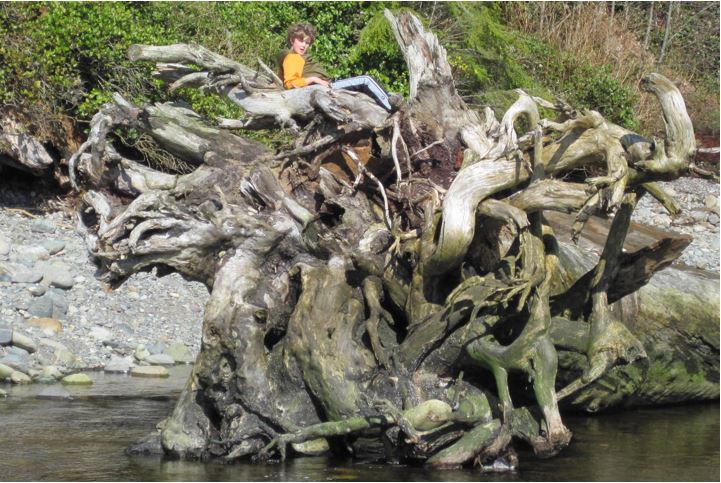
Getting Connected
While school field trips and community centre programs provide children with a short-term connection to a place, Young Naturalists learn about their natural neighbourhood over the course of many years. Children can join the club in kindergarten and graduate from the club in early high school. Young Naturalists’ programs are all about exploring new topics, but they also provide a strong connection to place. Kate Short, a volunteer leader from Kelowna, says that, “ We have been all over the valley this year, taking advantage of the diverse habitats and opportunities the Okanagan has to offer. This summer we hiked through the burn zone in Myra-Bellevue to learn about forest fires, collected insects at Mission Creek Park, and de-coded genetics along Mill Creek. YNC is about pairing education with conservation, and building a love for the environment that will stick with children as they grow from curious young minds into responsible adults and conscious citizens.” The club provides long term, sustained opportunities for children to connect to the different environments in and around the place where they live.
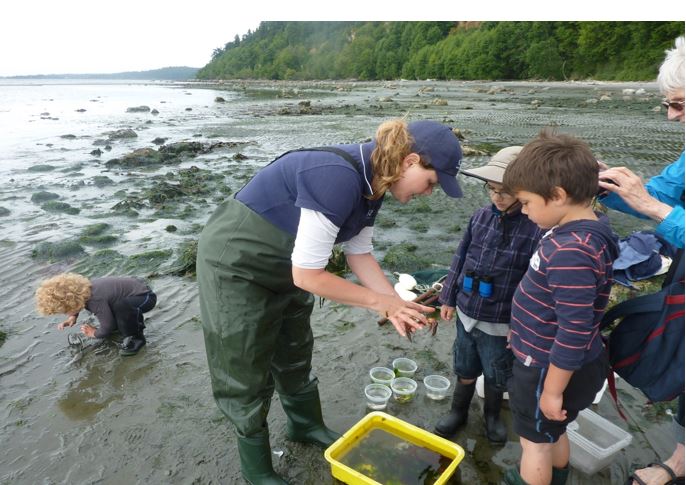
Growing Stewardship
Instead of a purely academic understanding of a place, the children get a hands-on and knees-dirty connection. From shoreline cleanups and tree planting to insect and bird surveys, children in the club are far from mere observers. They get in there and help. During one memorable adventure with the Vancouver homeschoolers’ club, twenty-five primary-aged children and families worked together to replant shrubs around a salmon spawning channel in North Vancouver. They learned about fish and local plants, and they also learned what fun it is to dig and get dirty.
Young Naturalists also get hands-on with crafts and other traditional skills, learning how to making functional and beautiful creations. Children love the hands-on aspect of the club. Eight-year-old Alexander says, “During our survival outing, it was great to learn how to weave your own shelter.” Do you remember where your childhood fort was, or where you gardened as a child? Action connects children to the landscapes where they live, and they return to see if the shelter is still there or how the trees they planted are growing.
If you know a child who’d like to get hands-on in their local places and meet wonderful community mentors, visit the Young Naturalists’ Club at www.ync.ca to find a list of British Columbia’s family and school-based clubs or to sign up for NatureWILD the Young Naturalists’ Club magazine for children and their families.
Tricia Edgar is a naturalist, YNC leader, and a board member of the Young Naturalists’ Club of BC.



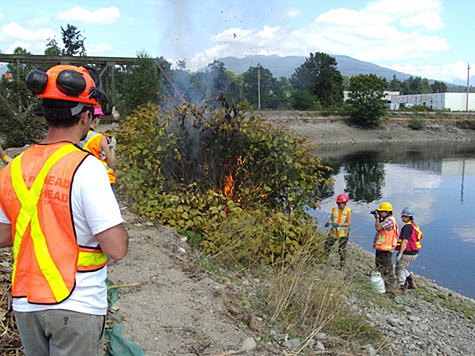


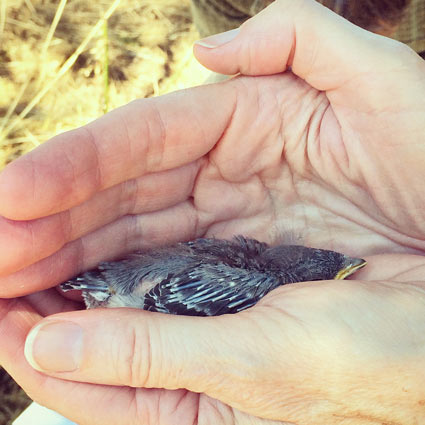
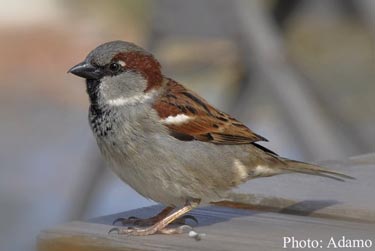
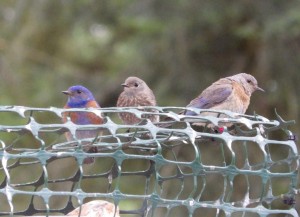 The first two years of the project enjoyed remarkable successes with 9 nestlings fledged in 2012 and 32 nestlings fledged in 2013. This year saw some challenges for the nesting bluebirds. While some bluebirds were lost to predators (likely suspects: domestic cats, mink or raccoon), the most harm came from depredation from the invasive House Sparrow. These small birds are highly territorial and aggressive, attacking any birds (adults and nestlings) within their breeding territory. This year 6 nestlings were lost to House Sparrow attacks. Thanks to the determined efforts of the GOERT Recovery Team, volunteers and the Island Wildlife Natural Care Centre, several injured nestlings were rescued, rehabilitated and returned to the wild. You can read more about this on the GOERT website’s
The first two years of the project enjoyed remarkable successes with 9 nestlings fledged in 2012 and 32 nestlings fledged in 2013. This year saw some challenges for the nesting bluebirds. While some bluebirds were lost to predators (likely suspects: domestic cats, mink or raccoon), the most harm came from depredation from the invasive House Sparrow. These small birds are highly territorial and aggressive, attacking any birds (adults and nestlings) within their breeding territory. This year 6 nestlings were lost to House Sparrow attacks. Thanks to the determined efforts of the GOERT Recovery Team, volunteers and the Island Wildlife Natural Care Centre, several injured nestlings were rescued, rehabilitated and returned to the wild. You can read more about this on the GOERT website’s 


